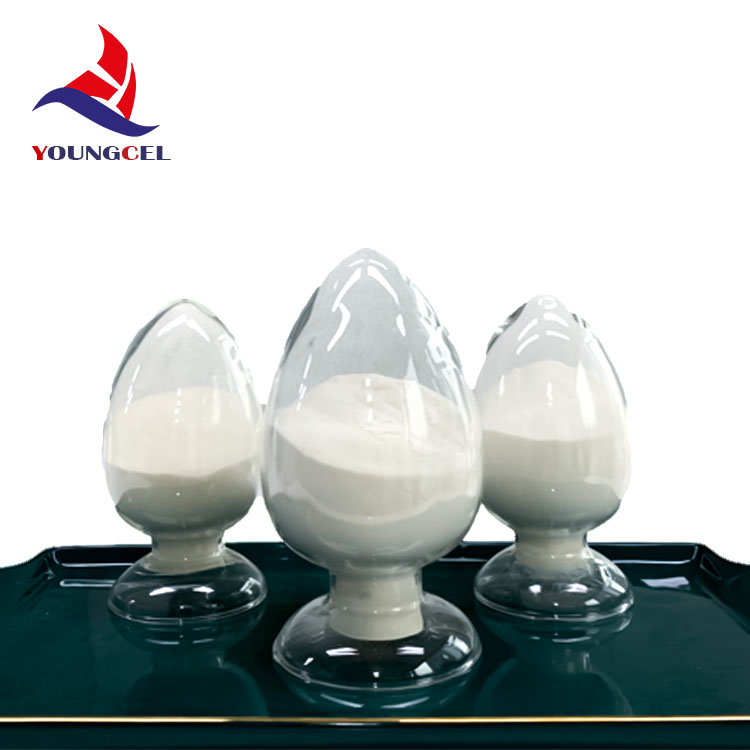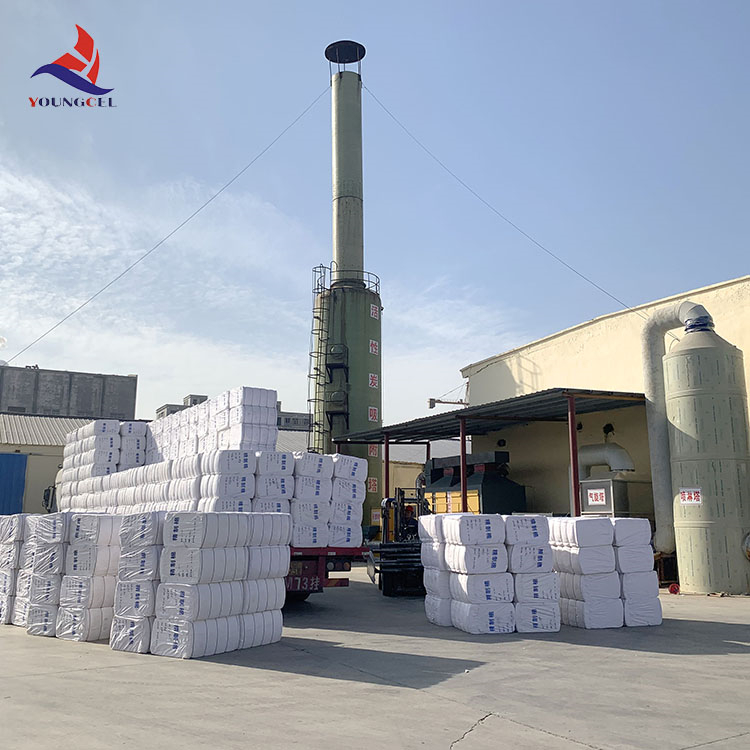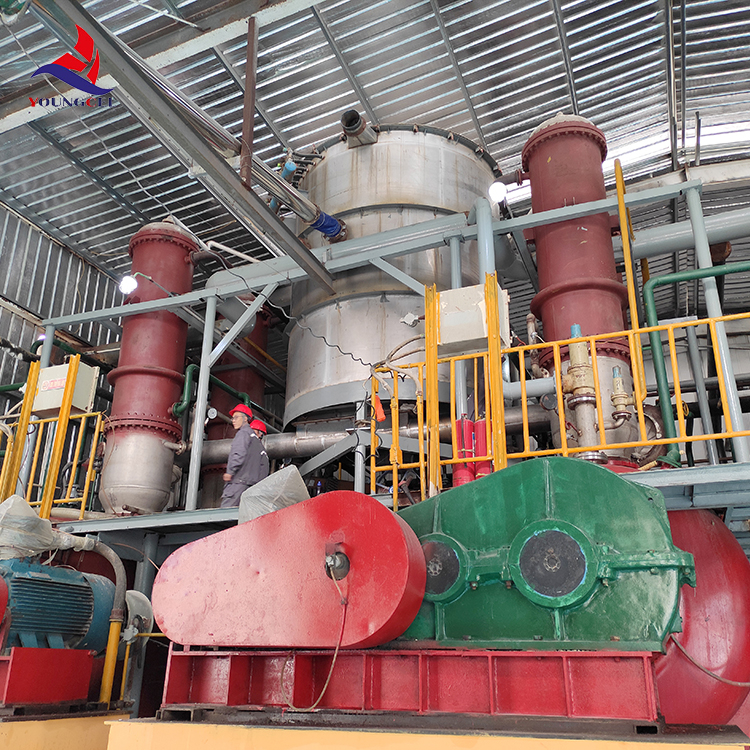Navigating the Landscape of Cellulose Ethers in Paint Formulations
In the dynamic world of coatings and paints, the efficacy and performance of the final product hinge significantly on the quality of its rheology modifiers and thickeners. Among the most crucial additives are cellulose ethers, particularly Hydroxyethyl Cellulose (HEC), Hydroxypropyl Methyl Cellulose (HPMC), and Hydroxyethyl Methyl Cellulose (HEMC). These versatile polymers are indispensable for achieving desired viscosity, stability, and application properties in water-based paints. The industry is witnessing a consistent trend towards more environmentally friendly, high-performance waterborne coatings, driving the demand for advanced cellulose ether solutions. As formulators seek superior film formation, sag resistance, and open time, selecting the optimal cellulose ether becomes paramount. This comprehensive guide explores the critical aspects of Hemc/Hec/Hpmc Hydroxy Ethyl Cellulose Hec 100000 Hydroxyethylcellulose Hec for Paint, highlighting its technical prowess and application advantages in the modern coatings industry.
The market for cellulose ethers in paint is characterized by innovation, driven by stricter environmental regulations and the need for more efficient application. Trends indicate a growing preference for products that offer excellent pseudoplasticity, enabling easy application with brushes or rollers while preventing sagging on vertical surfaces. Furthermore, improved biostability and enzyme resistance are critical for extending the shelf life of paint formulations. These attributes, coupled with cost-effectiveness and broad compatibility with various paint components, position advanced cellulose ethers as a cornerstone of high-quality paint manufacturing. Understanding the nuanced differences and specific benefits of each type—HEC, HEMC, and HPMC—is essential for paint manufacturers aiming to optimize their formulations for diverse end-user requirements and performance benchmarks.
Understanding the Core: Technical Parameters and Performance Attributes
Cellulose ethers are water-soluble polymers derived from cellulose, a natural polysaccharide. Through a series of chemical reactions, hydroxyl groups on the cellulose backbone are substituted with various ether groups, imparting unique properties. For paint applications, the degree of substitution (DS) and molar substitution (MS) are critical parameters that dictate water solubility, thickening efficiency, enzymatic stability, and compatibility. Viscosity, typically measured in centipoise (cP) or Pascal-seconds (Pa·s) for a specific concentration (e.g., 2% solution), is a primary indicator of a cellulose ether's thickening power. Particle size, pH stability, and gelation temperature also play significant roles in the final paint formulation's performance and stability.

Specifically, for Hemc/Hec/Hpmc Hydroxy Ethyl Cellulose Hec 100000 Hydroxyethylcellulose Hec for Paint, the "100000" often refers to its approximate viscosity range in a specified solution, indicating a high-viscosity grade suitable for demanding thickening requirements. HEC, with its non-ionic nature, offers broad compatibility and excellent water retention. HPMC provides enhanced biostability and thermal gelation properties, while HEMC combines attributes of both, often offering a good balance of thickening, sag resistance, and open time. Below is a comparative table detailing typical parameters of these cellulose ethers relevant to paint formulations.
Typical Product Specifications for Paint-Grade Cellulose Ethers
| Parameter | Hydroxyethyl Cellulose (HEC) | Hydroxypropyl Methyl Cellulose (HPMC) | Hydroxyethyl Methyl Cellulose (HEMC) |
|---|---|---|---|
| Viscosity (2% Solution, 25°C, mPa·s) | 75,000 - 150,000 (e.g., HEC 100000 grade) | 40,000 - 100,000 | 60,000 - 120,000 |
| pH Range for Stability | 3.0 - 10.0 | 2.0 - 11.0 | 3.0 - 10.0 |
| Moisture Content (%) | ≤ 5.0 | ≤ 6.0 | ≤ 5.0 |
| Ash Content (%) | ≤ 2.0 | ≤ 3.0 | ≤ 2.5 |
| Clarity (2% Solution) | ≥ 90% Transmittance | ≥ 95% Transmittance | ≥ 90% Transmittance |
| Enzyme Resistance | Good | Excellent | Very Good |
These specifications ensure that the chosen cellulose ether, such as Hemc/Hec/Hpmc Hydroxy Ethyl Cellulose Hec 100000 Hydroxyethylcellulose Hec for Paint, meets the rigorous demands of modern paint production, providing consistent rheological control and long-term stability. Selecting a reputable manufacturer that adheres to strict quality control protocols is crucial for maintaining batch-to-batch consistency and reliable performance.
The Meticulous Manufacturing Process of Premium Cellulose Ethers
The production of high-quality cellulose ethers for paint applications is a sophisticated chemical engineering process, far removed from mechanical processing like casting or forging. It begins with premium-grade cellulose pulp, typically wood pulp or cotton linter, which serves as the raw material. The primary stages involve alkalization, etherification, purification, and drying. In the alkalization step, cellulose is treated with a concentrated caustic soda (NaOH) solution, which swells the cellulose fibers and activates the hydroxyl groups, making them more reactive for subsequent etherification. This step is crucial for achieving uniform substitution.

Following alkalization, the alkali cellulose is reacted with specific etherifying agents in a carefully controlled environment. For HEC, ethylene oxide is used; for HPMC, methyl chloride and propylene oxide are employed; and for HEMC, a combination of methyl chloride and ethylene oxide is utilized. This etherification reaction is exothermic and requires precise temperature and pressure control to achieve the desired degree of substitution and molar substitution, which directly impacts the product's solubility and viscosity. Post-etherification, the crude cellulose ether is washed extensively with hot water to remove salts and unreacted by-products, ensuring high purity. This purification step is vital for the product's performance in paint, as impurities can affect stability and film properties.
Finally, the purified cellulose ether slurry is dried, milled, and screened to specific particle sizes, typically a fine powder, to ensure easy dispersion and dissolution in paint formulations. Throughout the entire process, stringent quality control measures are implemented. Adherence to international standards like ISO 9001 for quality management and ISO 14001 for environmental management is paramount. Each batch undergoes rigorous testing for viscosity, moisture content, ash content, pH, and clarity to ensure it meets the published specifications for products like Hemc/Hec/Hpmc Hydroxy Ethyl Cellulose Hec 100000 Hydroxyethylcellulose Hec for Paint. This meticulous manufacturing process ensures that the cellulose ethers deliver consistent performance, extended shelf life, and optimal functionality in various paint systems.
Technical Superiority and Advantages in Paint Formulations
The selection of the right cellulose ether significantly impacts paint performance. Products such as Hemc/Hec/Hpmc Hydroxy Ethyl Cellulose Hec 100000 Hydroxyethylcellulose Hec for Paint offer a multitude of technical advantages that are critical for high-quality coatings. Foremost among these is superior rheology modification. Cellulose ethers provide pseudoplasticity, meaning the paint thins under shear stress (e.g., during brushing or rolling) but quickly recovers its viscosity upon removal of the stress, preventing drips and ensuring uniform film thickness. This characteristic is vital for smooth application and excellent sag resistance, especially on vertical surfaces.

Another significant advantage is water retention. Cellulose ethers effectively bind water within the paint film, extending the open time, which allows for better leveling and reduces brush marks, leading to a smoother finish. This property is particularly beneficial in hot or dry conditions. Furthermore, they contribute to the stability of the paint dispersion, preventing pigment settling and syneresis (water separation) during storage. This ensures a consistent product over its shelf life. The film-forming capabilities of cellulose ethers also enhance the paint's final appearance and durability, contributing to adhesion, scrub resistance, and overall coating integrity. Their compatibility with a wide range of paint components, including binders, pigments, and other additives, makes them a versatile choice for diverse formulations.
Comparative Performance in Paint Applications
| Feature | HEC | HPMC | HEMC |
|---|---|---|---|
| Thickening Efficiency | High | Very High | High |
| Water Retention | Excellent | Excellent | Excellent |
| Sag Resistance | Good | Very Good | Excellent |
| Leveling | Good | Good | Very Good |
| Biostability | Moderate | High | High |
| Open Time Extension | Significant | Significant | Significant |
This comparison illustrates that while all three cellulose ethers offer substantial benefits, specific formulation goals may dictate the preference for one over the others. For example, for excellent sag resistance and combined properties, Hemc/Hec/Hpmc Hydroxy Ethyl Cellulose Hec 100000 Hydroxyethylcellulose Hec for Paint often proves to be an optimal choice.
Diverse Application Scenarios in Coatings and Beyond
The versatility of cellulose ethers, particularly Hemc/Hec/Hpmc Hydroxy Ethyl Cellulose Hec 100000 Hydroxyethylcellulose Hec for Paint, extends across a broad spectrum of paint and coating applications. In architectural paints, they are critical for water-based interior and exterior emulsions, providing necessary thickening, pigment suspension, and improved workability. They ensure that paints offer excellent coverage, minimal splatter, and a smooth, uniform finish. For high-performance latex paints, cellulose ethers contribute to increased scrub resistance and durability, meeting stringent industry standards for longevity and appearance.

Beyond conventional paints, these cellulose ethers find significant use in specialized coatings such as textured paints, plasters, and renders, where their water retention and adhesive properties are invaluable for workability and preventing premature drying. In these applications, they contribute to the structural integrity and ease of application, allowing for intricate designs and robust finishes. Furthermore, their applications extend to related construction materials like tile adhesives, grouts, and self-leveling compounds, where they enhance water retention, open time, and bond strength. This broad applicability underscores the essential role these materials play in a wide array of industrial and commercial products.
Consider an application case in a large-scale commercial building project where high-durability, low-VOC interior latex paint was specified. The paint manufacturer utilized a high-viscosity Hemc/Hec/Hpmc Hydroxy Ethyl Cellulose Hec 100000 Hydroxyethylcellulose Hec for Paint grade to achieve the precise rheology required for both spray and roller application. The product's excellent sag resistance ensured consistent film thickness on tall walls and ceilings, while its extended open time allowed painters to achieve seamless finishes over large areas. Post-application, the paint exhibited superior leveling and brush mark reduction, contributing to a premium aesthetic. This real-world example demonstrates the tangible benefits of incorporating precisely engineered cellulose ethers into advanced paint formulations, ensuring both performance and aesthetic quality.
Custom Solutions, Quality Assurance, and Unwavering Support
Recognizing that each paint formulation presents unique challenges, leading manufacturers of cellulose ethers offer bespoke solutions designed to meet specific customer requirements. This goes beyond standard product offerings to include tailored viscosity ranges, specific substitution patterns for enhanced properties (e.g., improved biostability or salt tolerance), and optimized particle sizes for ease of dispersion. Companies with extensive R&D capabilities can collaborate closely with paint formulators to develop custom grades of Hemc/Hec/Hpmc Hydroxy Ethyl Cellulose Hec 100000 Hydroxyethylcellulose Hec for Paint that perfectly integrate into existing production lines and deliver desired final product characteristics. This level of customization is a hallmark of an expert partner in the chemical supply chain.

Quality assurance is paramount. Reputable suppliers adhere to the most stringent international standards, including ISO 9001 for consistent quality management and often specialized certifications like those relevant to REACH or specific regional chemical regulations. They conduct comprehensive testing on every batch to ensure product integrity and consistency, providing Certificates of Analysis (CoA) with each shipment. Delivery schedules are typically well-managed, with established logistics networks ensuring timely and reliable supply, often with flexible packaging options to accommodate various production scales. Furthermore, a robust quality assurance program includes a clear warranty commitment, typically guaranteeing product conformity to specifications for a defined period, offering peace of mind to manufacturers.
Beyond product quality, exemplary customer support is crucial. This includes technical assistance from experienced chemists and application specialists who can provide guidance on formulation optimization, troubleshoot issues, and offer insights into industry best practices. This collaborative approach fosters long-term partnerships, ensuring that clients not only receive high-quality Hemc/Hec/Hpmc Hydroxy Ethyl Cellulose Hec 100000 Hydroxyethylcellulose Hec for Paint but also benefit from expert knowledge that helps them achieve their specific product goals and maintain a competitive edge in the market. Investing in a supplier that provides both superior product quality and comprehensive technical support is a strategic decision for any paint manufacturer.
Frequently Asked Questions (FAQ) about Cellulose Ethers for Paint
Q1: What is the primary difference between HEC, HPMC, and HEMC in paint applications?
A1: While all three are effective thickeners and rheology modifiers, their chemical structures lead to nuanced differences. HEC (Hydroxyethyl Cellulose) is non-ionic and offers excellent water retention and compatibility with a wide range of additives. HPMC (Hydroxypropyl Methyl Cellulose) provides superior enzymatic resistance, thermal gelation properties, and often better sag resistance. HEMC (Hydroxyethyl Methyl Cellulose) combines features of both, offering a balanced profile of thickening, water retention, sag resistance, and good biostability. The choice of Hemc/Hec/Hpmc Hydroxy Ethyl Cellulose Hec 100000 Hydroxyethylcellulose Hec for Paint depends on the specific performance requirements of the paint formulation.
Q2: How does the "100000" in "HEC 100000" relate to paint performance?
A2: The "100000" typically denotes the approximate viscosity (in mPa·s or cP) of a 2% aqueous solution of the HEC grade at 25°C. A higher number indicates a higher viscosity grade, meaning a smaller amount of the cellulose ether is needed to achieve a desired thickening effect in the paint. This is crucial for controlling paint flow, preventing sag, and ensuring proper film build-up for Hemc/Hec/Hpmc Hydroxy Ethyl Cellulose Hec 100000 Hydroxyethylcellulose Hec for Paint.
Q3: What role does water retention play in paint, and how do cellulose ethers contribute?
A3: Water retention is critical for extending the "open time" of paint, which is the period during which the paint remains workable after application. This allows for better leveling, smoother finishes, and reduces issues like brush marks or roller marks. Cellulose ethers, including Hemc/Hec/Hpmc Hydroxy Ethyl Cellulose Hec 100000 Hydroxyethylcellulose Hec for Paint, form a viscous solution that slows down the evaporation of water from the paint film, thereby enhancing open time and ensuring a more professional appearance.
Q4: What are the typical delivery times for bulk orders of cellulose ethers?
A4: Delivery times for bulk orders vary depending on the supplier's inventory, production schedule, and shipping destination. Generally, for established suppliers with robust logistics, standard delivery might range from 2 to 4 weeks. Expedited options may be available for urgent requirements. It's always best to discuss specific lead times and minimum order quantities directly with your supplier for products like Hemc/Hec/Hpmc Hydroxy Ethyl Cellulose Hec 100000 Hydroxyethylcellulose Hec for Paint.
Q5: Is there a warranty or guarantee on the product quality?
A5: Reputable manufacturers and suppliers of cellulose ethers typically provide a warranty guaranteeing that their products meet the published technical specifications (e.g., viscosity, purity, moisture content) at the time of delivery. This commitment to quality is usually outlined in their terms and conditions, often for a period of 12-24 months under proper storage conditions. Always request and review the supplier's quality certifications and warranty policy when procuring Hemc/Hec/Hpmc Hydroxy Ethyl Cellulose Hec 100000 Hydroxyethylcellulose Hec for Paint.
Conclusion: Partnering for Paint Excellence
The performance of waterborne paints is inextricably linked to the quality and specific properties of their rheology modifiers. Hemc/Hec/Hpmc Hydroxy Ethyl Cellulose Hec 100000 Hydroxyethylcellulose Hec for Paint stands as a testament to advanced chemical engineering, offering solutions that enhance thickening efficiency, sag resistance, water retention, and overall paint stability. By understanding the intricate manufacturing processes, technical parameters, and diverse application scenarios, paint manufacturers can make informed decisions that lead to superior products. Partnering with a supplier who prioritizes stringent quality control, offers custom solutions, and provides robust technical support is crucial for navigating the evolving demands of the coatings industry and achieving consistent, high-quality results.
References
- Klemm, D., et al. "Cellulose: Fascinating Biopolymer and Sustainable Raw Material." Angewandte Chemie International Edition, 2005.
- Sjöberg, J., et al. "Rheological Behavior of Hydroxyethyl Cellulose (HEC) Solutions." Journal of Rheology, 2003.
- Boch, P., et al. "Effect of Cellulose Ethers on Water Retention and Mechanical Properties of Cement-based Materials." Cement and Concrete Research, 2008.
- Kroon, T., et al. "Hydrophobically Modified Hydroxyethyl Cellulose (HMHEC) in Paint Formulations." Progress in Organic Coatings, 2010.
- Wasserman, E., et al. "Biostability of Cellulose Ethers in Aqueous Solutions." Polymer Degradation and Stability, 2015.
-
Rdp that The Revolutionary Polymer Powder Transforming Modern Construction MaterialsNewsAug.11,2025
-
Hpmc Powder that Versatile Additive for Detergents and Personal CareNewsAug.11,2025
-
Hpmc Hydroxypropyl Methylcellulose that Essential Building Material Additive from Shijiazhuang Gaocheng YongfengNewsAug.11,2025
-
Hydroxypropyl Methyl Cellulos Hpmc that Essential for Construction ApplicationsNewsAug.11,2025
-
Mhec Powder that Revolutionizing Construction Chemistry with Cellulose Ether SolutionsNewsAug.11,2025
-
Industri Hpmc that The Global Backbone of Advanced ConstructionNewsAug.11,2025




